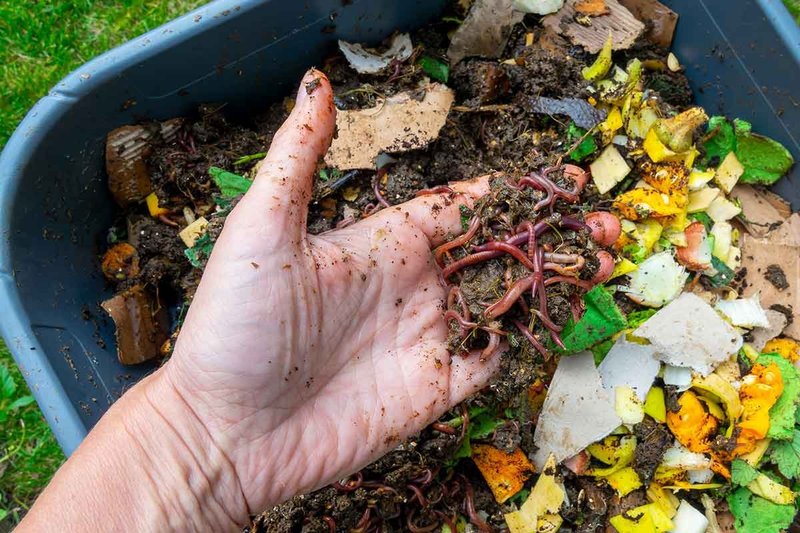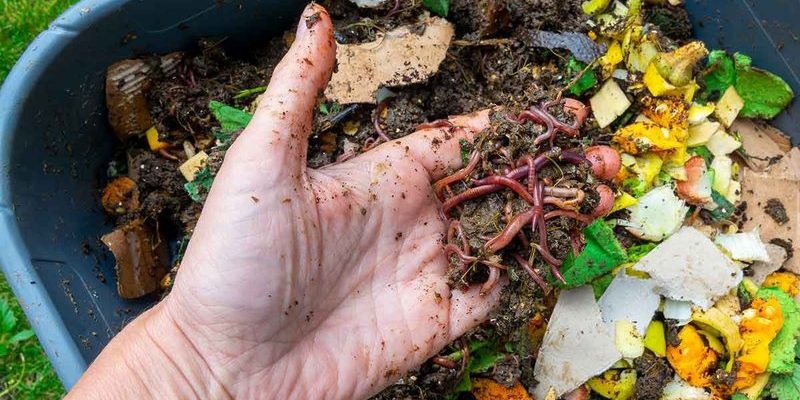
Hammerhead worms, with their distinctive flat, hammer-shaped heads, can be quite the nuisance. They’re not just unsightly; they can disrupt the balance in your compost and your garden. You may be wondering how to keep your composting efforts on track without inviting these unwelcome guests. Don’t worry! This article will guide you through setting up a thriving compost pile while keeping hammerhead worms at bay.
Understanding Hammerhead Worms
Before we get into composting, let’s talk about these unusual critters. Hammerhead worms, also known as *Bipalium kewense*, are native to Southeast Asia but have made their way to different parts of the globe. They can be identified by their flat bodies and, of course, that hammer-shaped head. They’re often found in warm, moist environments, which makes your compost heap a perfect spot for them.
These worms thrive on earthworms, other soil-dwelling creatures, and organic matter, which means they can seriously disrupt the health of your compost. When they invade, they tend to outcompete the beneficial microorganisms and organisms, leading to an imbalance in your compost. This is why it’s crucial to understand how they operate and how to keep them away.
Choosing the Right Composting Method
One of the best ways to avoid hammerhead worms is to start with the right composting method. There are several types of composting systems you can choose from, and each has its pros and cons. Here are a few popular approaches:
- Bins: Enclosed bins are great because they keep your compost contained and regulate moisture levels. They also make it harder for unwanted pests to get in.
- Piles: Traditional compost piles offer excellent aeration but can be more inviting to unwanted creatures. If you opt for a pile, try to keep it away from moist areas.
- Tumbler composters: These are enclosed, rotating bins that mix your compost for you. They’re excellent for heat generation, which can deter pests.
Choosing the right method means you’re already taking a step in the right direction. If you can create a less inviting environment for hammerhead worms, you’re golden!
What to Compost (and What Not to)
Knowing what to add to your compost is as important as the method you choose. Some materials attract hammerhead worms, while others can enhance the compost. Here’s what to focus on:
- Greens: Kitchen scraps like fruit and vegetable peels are fantastic. Just make sure to chop them up to speed up decomposition.
- Browns: Items like dry leaves, cardboard, and straw are great for balancing out the nitrogen-rich greens.
- Avoid: Don’t add anything that’s been treated, like diseased plants or meats, which can attract unwanted pests.
Balancing greens and browns not only creates rich compost but also makes it less appealing to hammerhead worms since they prefer decaying organic matter.
Maintaining Proper Moisture Levels
Moisture is key in composting, but too much can draw in those pesky hammerhead worms. Ideally, your compost should feel like a damp sponge—moist but not dripping wet. Here’s how to maintain that sweet spot:
– **Check regularly:** Give your compost a poke every week or so. If it feels dry, add a little water. If it’s soggy, add more dry browns to soak it up.
– **Cover your compost:** A tarp or a lid can help regulate moisture and keep excess rainwater out. This way, you control the environment better.
– **Aerate often:** Turning your compost pile allows air in and helps moisture escape. Aeration is a great way to prevent your compost from becoming too wet and attractive to hammerhead worms.
Keeping the right moisture level is crucial in discouraging these worms and helps balance the decomposition process.
Using Heat to Your Advantage
Did you know that heat plays a significant role in keeping hammerhead worms away? When you properly manage your compost, it can generate heat through decomposition. Here’s how to leverage that heat:
– **Build it up:** Create your compost pile at least three feet high. This size will help retain heat.
– **Turn it regularly:** When you turn your pile, it allows air to circulate, which heats it up further and speeds up the breakdown of materials. This heat can kill off hammerhead worms and other pests.
– **Monitor temperature:** Ideally, you want your compost to reach at least 130°F (54°C) for a while. You can use a compost thermometer to keep track.
Using heat effectively not only boosts the composting process but also deters hammerhead worms from setting up camp in your pile.
Regular Monitoring and Maintenance
Just like any garden project, regular monitoring is crucial for successful composting. You want to check on your compost frequently because the sooner you catch any issues, the easier they are to handle. Here are some tips for keeping tabs on your compost:
– **Look for signs of unwanted guests:** If you notice hammerhead worms, remove them immediately. Check the moisture levels, and make adjustments as necessary.
– **Turn your compost:** This keeps things aerated and helps with even decomposition. It also allows you to keep an eye out for any pests that might be lingering.
– **Stay vigilant:** Keep a regular compost checklist. Checking on it once a week can help you easily spot changes.
Regular monitoring is like being a detective for your compost. The more you know, the better you can manage it!
Final Thoughts on Hammerhead Worms and Composting
Composting can be a rewarding and sustainable practice, but it requires some care to keep it healthy. By understanding how to avoid hammerhead worms and creating the right conditions, you can successfully turn scraps into rich compost without the fuss. Remember to choose the right composting method, maintain moisture levels, use heat to your advantage, and keep a close eye on your pile.
With a bit of attention and the right materials, you can create a thriving compost heap that will benefit your garden and the environment. And best of all, you won’t need to deal with pesky hammerhead worms ruining your hard work! Happy composting!

